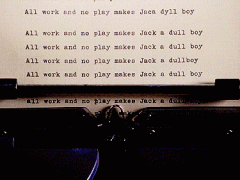Apollinaire: 10 things to know about
1. Wilhelm Albert Włodzimierz Apolinary Kostrowicki was born in Rome, Italy, and was raised speaking French, Italian, and Polish. After emigrating to France in his late teens he adopted the name Guillaume Apollinaire.
2. A friend of Pablo Picasso, Gertrude Stein, Max Jacob, André Salmon, André Breton, André Derain, Faik Konica, Blaise Cendrars, Pierre Reverdy, Alexandra Exter, Jean Cocteau, Erik Satie, Ossip Zadkine, Marc Chagall, Marcel Duchamp and Jean Metzinger, Apollinaire wrote the preface for the first Cubist exposition outside of Paris; VIII Salon des Indépendants, Brussels, 1911.
3. A poet, novelist and essayist, Apollinaire frequented the artistic and literary circles of the French capital. There he wrote “Les Peintres Cubistes, Meditations Esthétiques,” a landmark in the history of art criticism. The essay synthesizes the aesthetic preoccupations of not just the Cubists, but of Apollinaire himself. The volume is valued today as a work of reference and a vintage example of creative modernist writing. Apollinaire's book was written between 1905 and 1912, published in 1913. This was the third major text on Cubism; following Du Cubisme by Albert Gleizes and Jean Metzinger (1912); and André Salmon, Histoire anecdotique du cubisme (1912).
4. The author of a variety of different texts (prose fiction, drama, librettos etc.) Apollinaire published two significant works during his lifetime. “Alcools: Poèmes 1898-1913” (1913) and “Calligrammes: Poèmes de la paix et de la guerre 1913- 1916” (1918).
5. Noted for its use of “caligrams” in which typeface and arrangement of words on the page add to the meaning of the compositions Apollinaire's “Poems of Peace and War 1913-1916” is a stunning contribution to the tradition of concrete or visual poetry.
6. “The Calligrammes are an idealisation of free verse poetry and typographical precision in an era when typography is reaching a brilliant end to its career, at the dawn of the new means of reproduction that are the cinema and the phonograph”described the forefather of Surrealism, Apollinaire, in a letter to André Billy.
7. “As well as having a keen eye for the visual arts, the visual dimension of writing was extremely important to Apollinaire. Apollinaire took great care over the typographical layout of his work. Technical developments such as the phonograph, the telephone, radio and cinema provided new ways of storing and diffusing language without recourse to the written word” and a visionary like him approved.
8. “For Apollinaire, writing no longer had the same role, its status had changed and Apollinaire was one of the first to interrogate this” notes the author of An Introduction to Guillaume Apollinaire. “Language was something to be experienced for its concrete and graphic shapes, for its potential to convey meanings in other ways. Apollinaire insists on the `materiality’ of language, that is to say, its existence as visual marks of white on black or as patterns of sound.”
9. Willard Bohn's book Reading Apollinaire's Calligrammes examines Guillaume Apollinaire's second major collection of poetry. Composed between 1913 and 1918, the nineteen poems examined here fall into two main groups: the experimental poetry and the war poetry. They also provide glimpses of the poet's personal history, from his affair with Louise de Coligny-Châtillon to his engagement to Madeleine Pagès and his marriage with Jacqueline Kolb. Each section examines all of the previous scholarship for the work in question, provides a detailed analysis, and, in many cases, offers a new interpretation. Each poem is subjected to a meticulous line-by-line analysis in the light of current knowledge.
Another publication, Calligrammes: Poems of Peace and War (1913-1916) by Anne Hyde Greet and S. I. Lockerbie is a must for those who want to own a piece of Apollinaire. This fully annotated bilingual edition of Calligrammes makes available a key work not only in Apollinaire's own development but also in the evolution of modern French poetry.
10. Mercure de France published “Calligrammes: Poèmes de la paix et de la guerre 1913- 1916” shortly after his death. Apollinaire was one of the many victims of the 1918 Spanish Flu pandemic.
Tags/ typography, art, ten things, visual poetry, text, guillaume apollinaire, apollinaire, calligrames



























